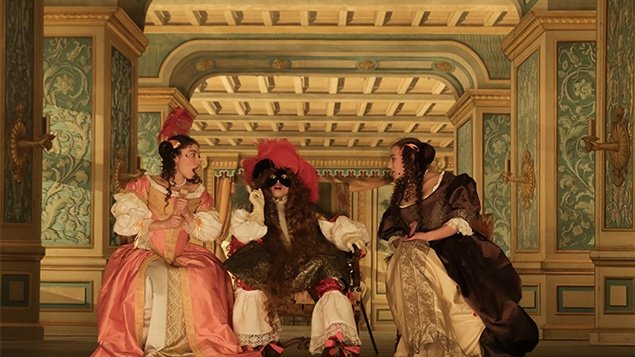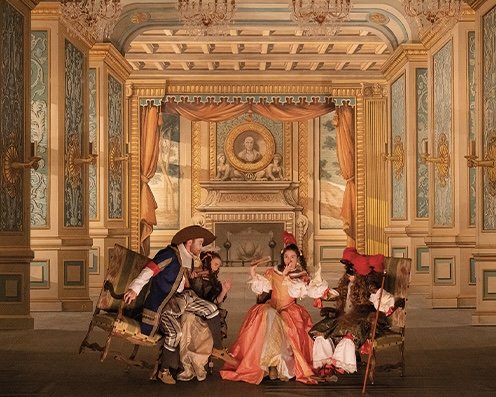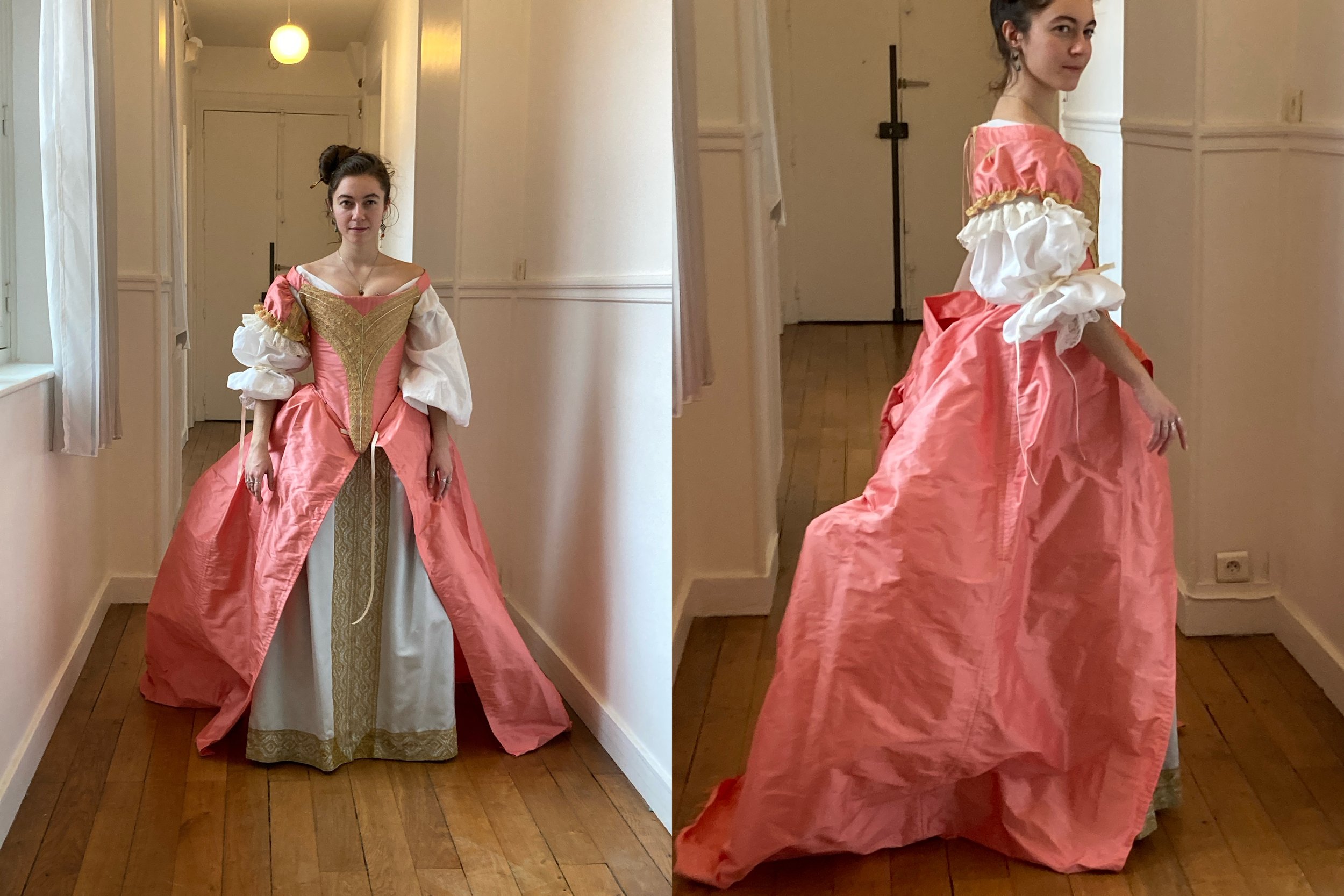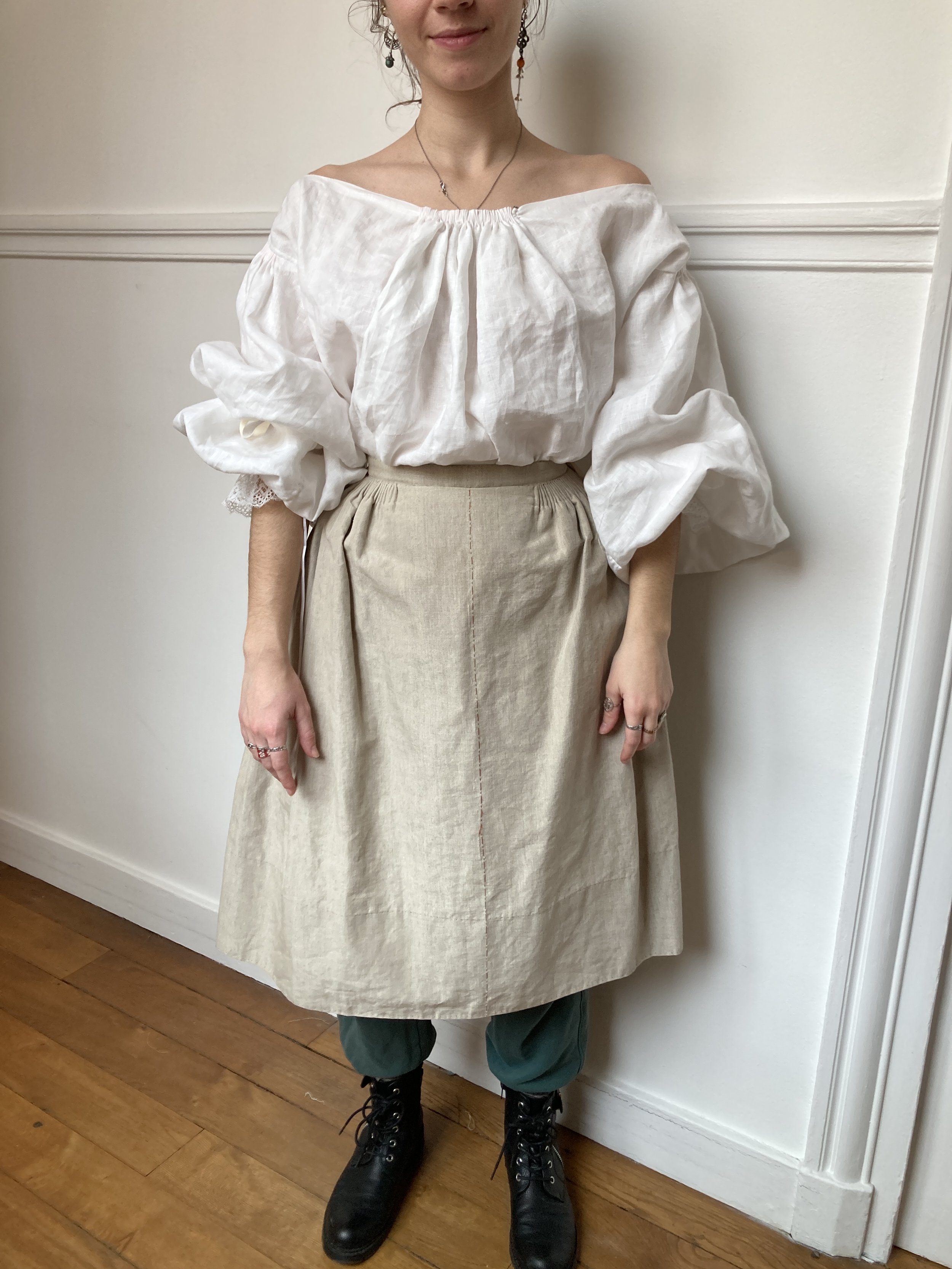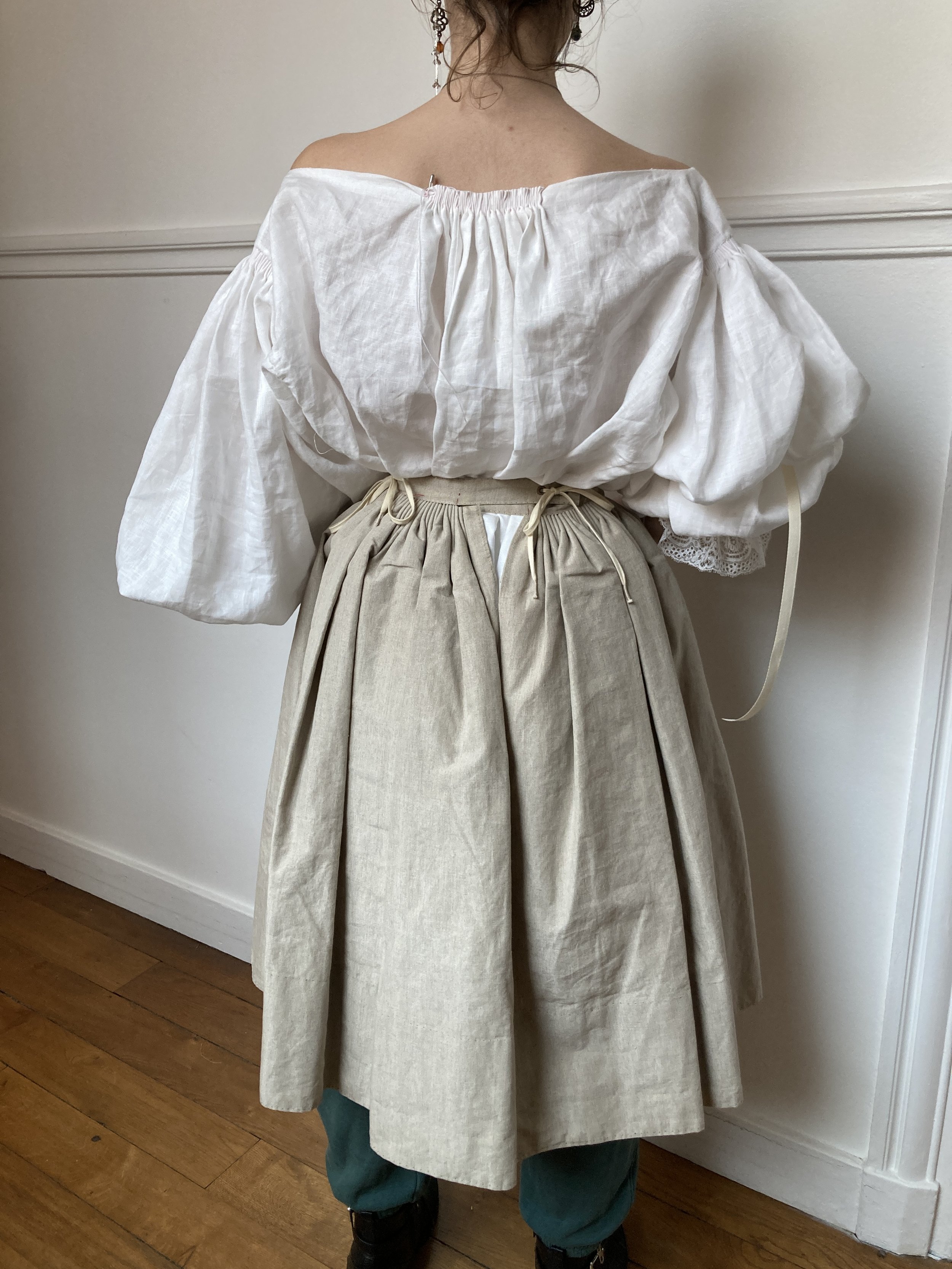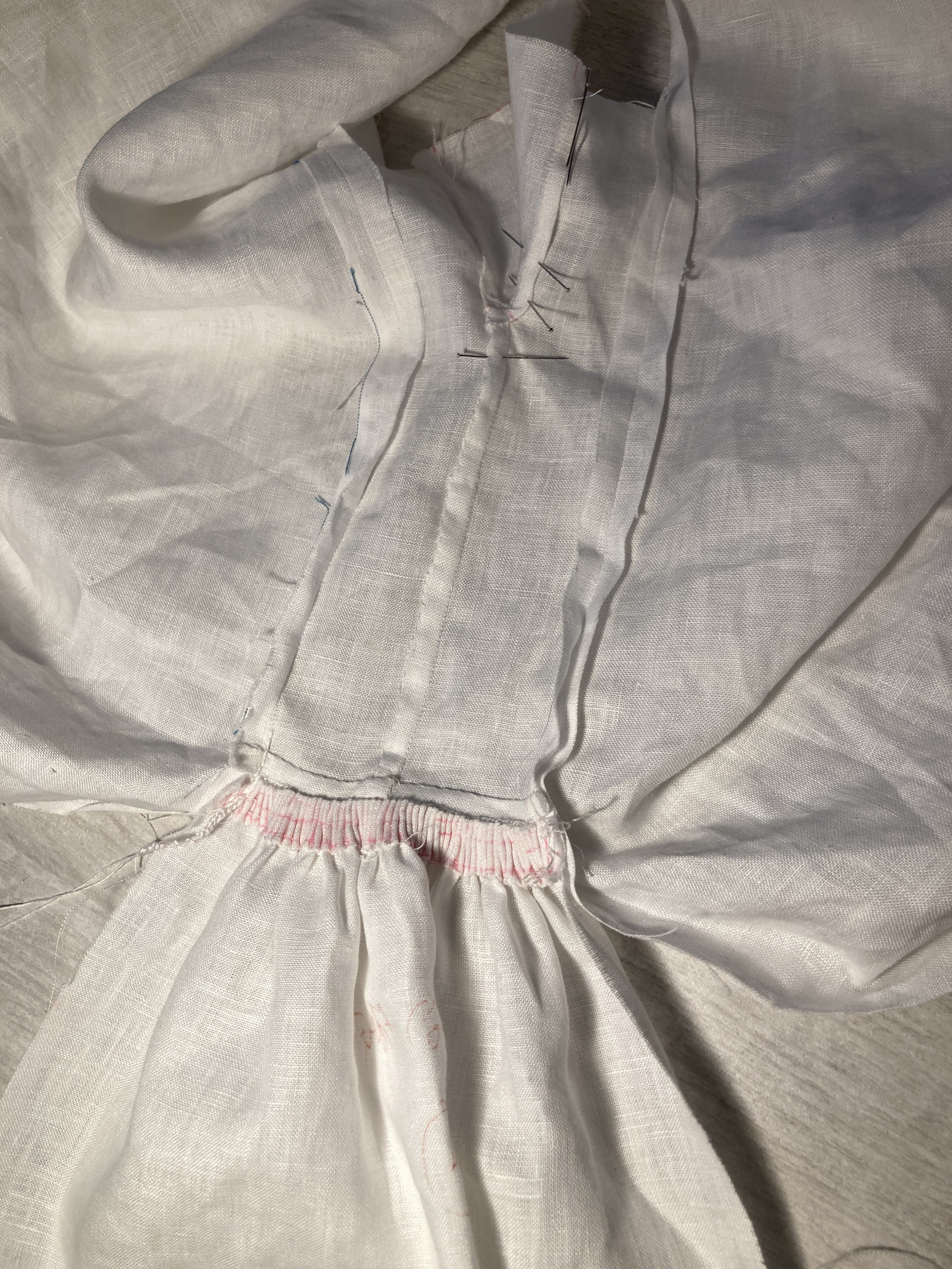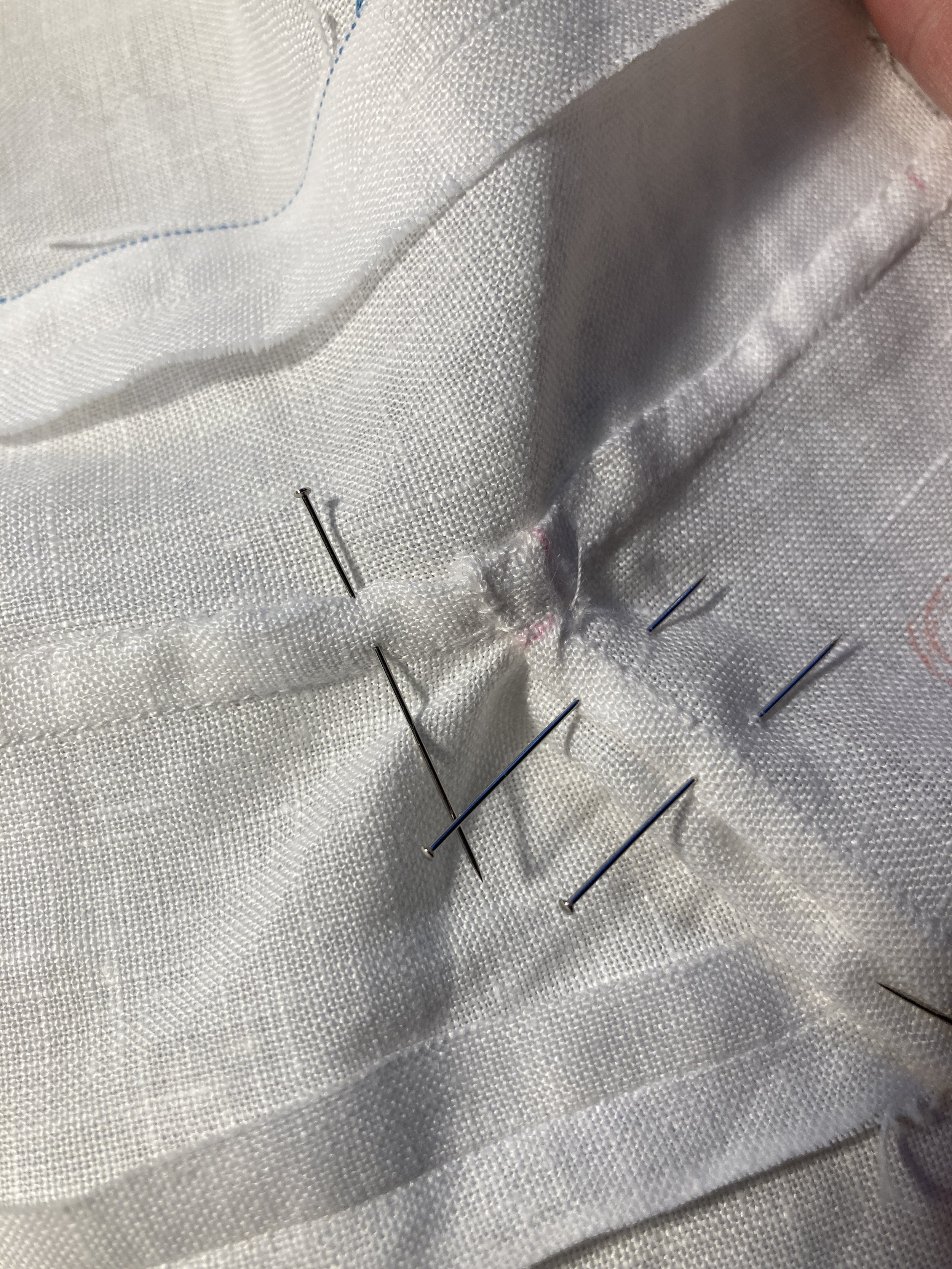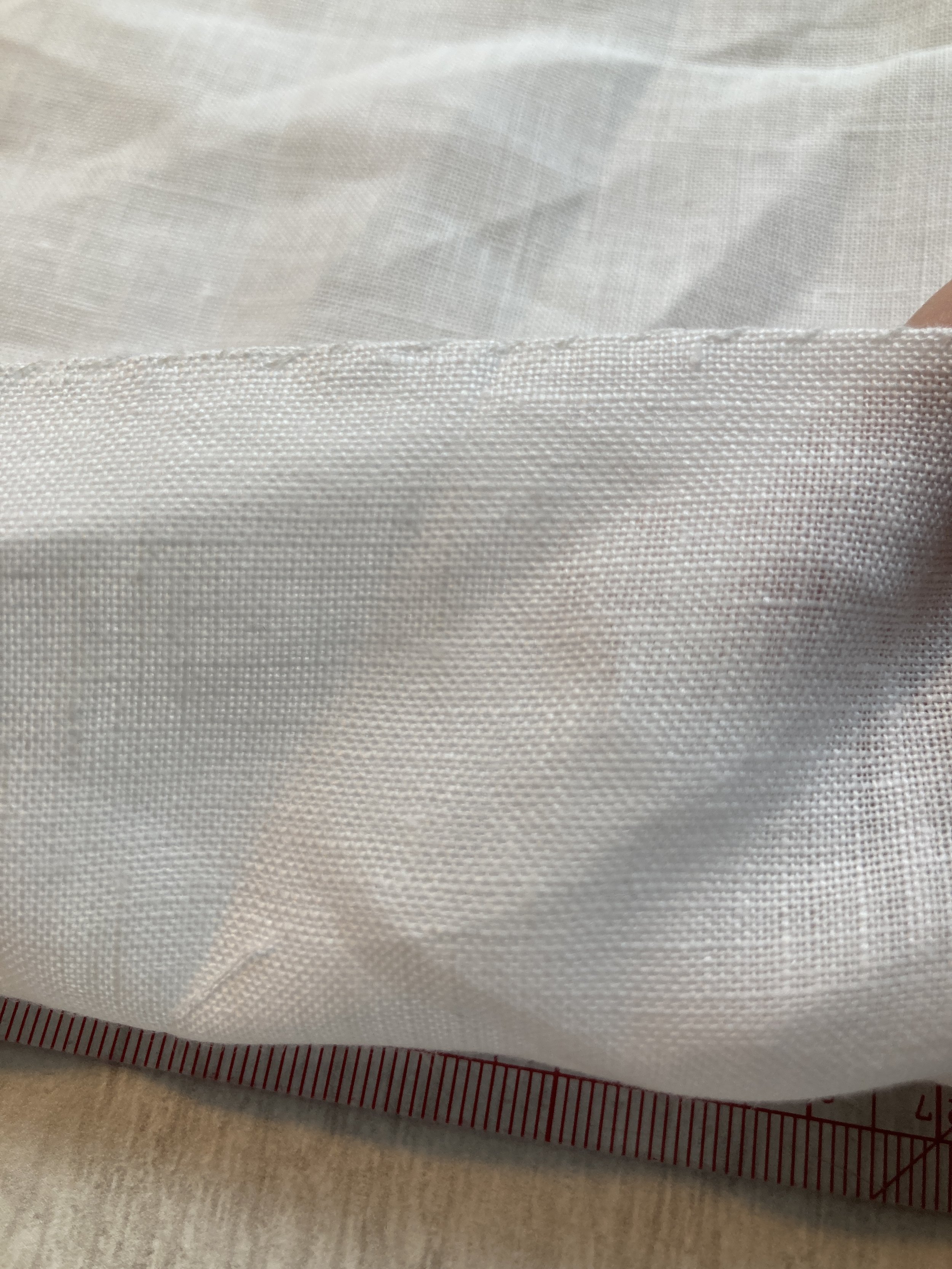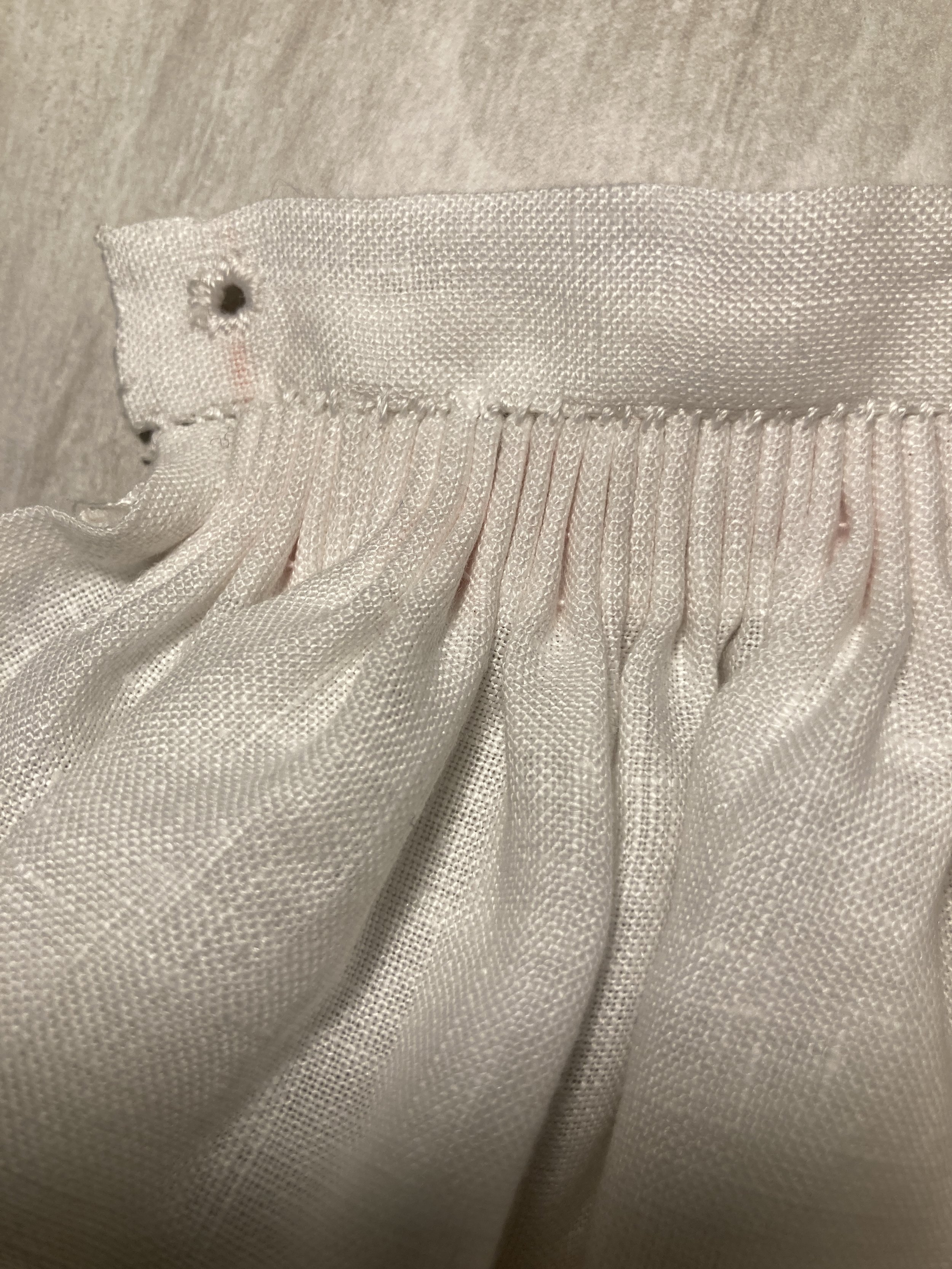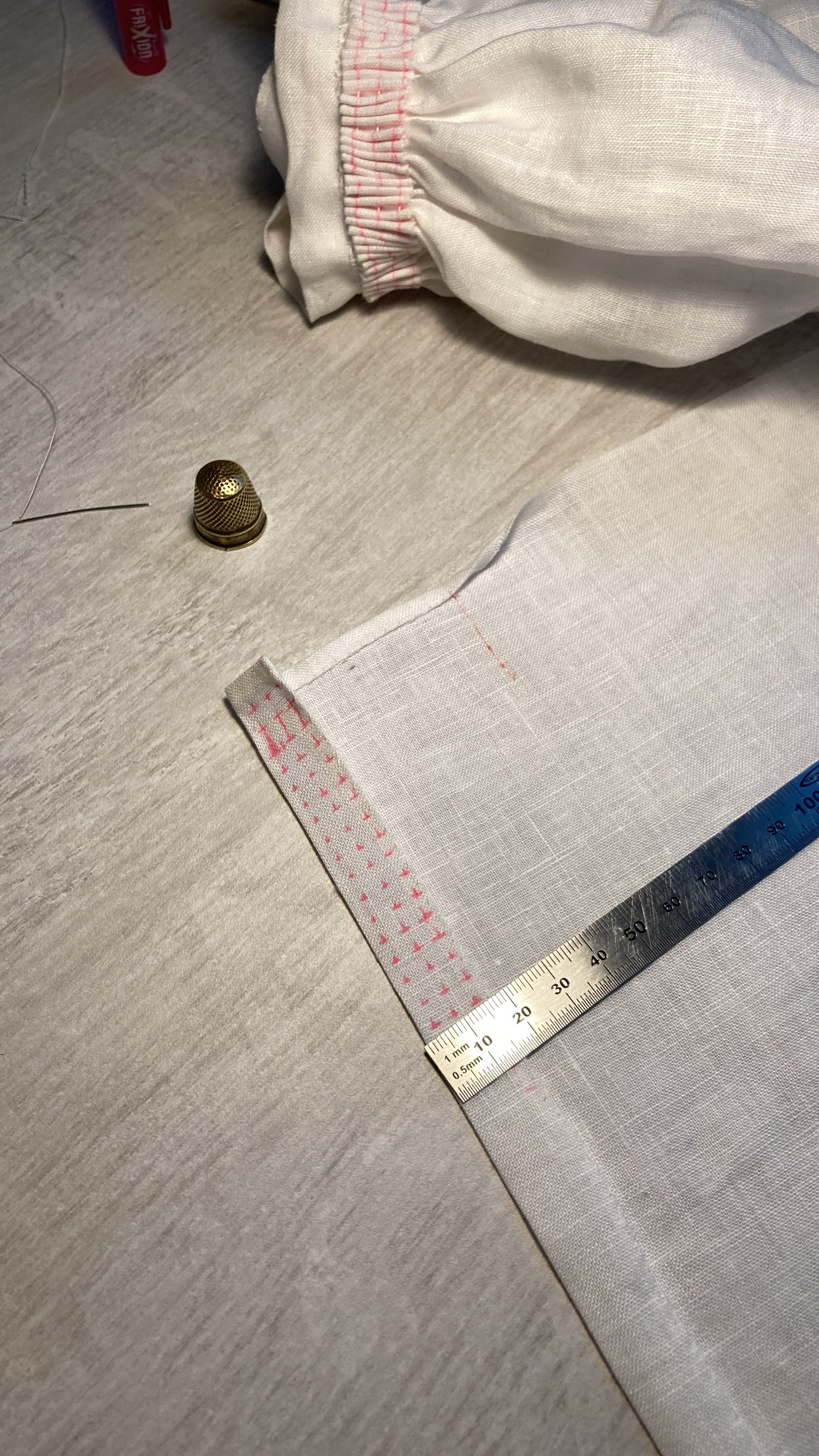17th Century Women's Shift
Les Précieuses ridicules (1659)
Linen shift in accurate 17th century style for Les Précieuses ridicules (debut 1569). Completely hand sewn, excepting long straight seams (side and sleeve). Includes cartridge pleating at the front and back neckline, sleeve head and sleeve cuffs, and top of rectangular inserts in the side of the shift. Created under the guidance of Delphine Desnus of Théâtre Molière-Sorbonne in Paris.
Fall 2023
